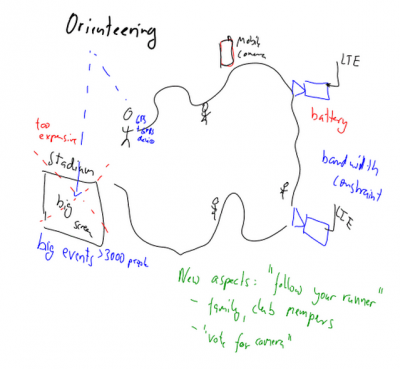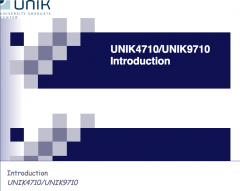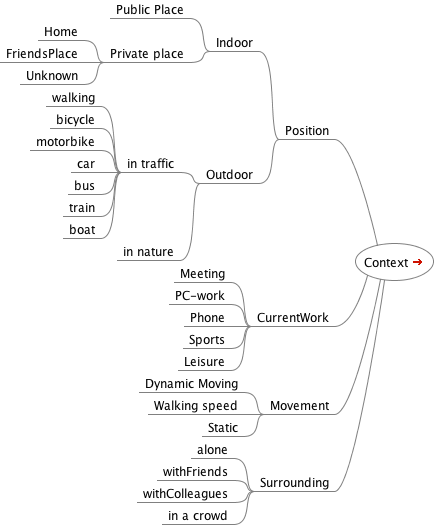Context-aware Scenarios part II
From its-wiki.no
| Wiki for ITS | ||||||
|---|---|---|---|---|---|---|
|
Context-aware Scenarios part II
| Course | UNIK4710, UNIK9710 |
|---|---|
| Title | Context-aware Scenarios |
| Lecture date | 2015/02/13 |
| presented | by Josef Noll |
| Objective | Continuation of scenario presentation |
| Learning outcomes | Having joined this lecture and prepared your scenario description, you
|
| Pensum (read before) | "What is a scenario"
|
| References (further info) | See examples of Scenarios from earlier courses
|
| Keywords | Scenario, Context, Location, Profile, RDF, Ontology, Semantic Technologies |
this page was created by Special:FormEdit/Lecture, and can be edited by Special:FormEdit/Lecture/Context-aware Scenarios part II.
Task for next lecture
Test yourself, answer these questions
- How do I start to build a Semantic Web?
- What is the role of Ontologies in the Semantic Web?
- What is RDF and what is it good for?
- Why RDF model is different from the XML model?
- What is OWL?
Lecture Notes & Scenarios
Presentations
- see presentations from Andreas and Eivind at Context-aware_Scenarios
- Rozina - Media:Save_areas_pollution_Rozina.pdf
- Kjetil - see picture
- Marcel - see: https://plus.google.com/107636785072275844843/posts/g9xkFpThhri
Lecture Notes 2014
- Notes: Media:UNIK4710-L4-v14-LectureNotes.pdf
- Identity 2.0 presentation by Dick Hardt at [1]
- Video: http://lux.unik.no/UNIK4710-JN/UNIK-20140124.wmv
Lecture Notes 2013
Lecture Notes 2012
Other info
- Title
- Basics of Semantics
- Author
- Josef Noll
- Footer
- Context-aware Scenarios part II
- Subfooter
- UNIK4710/UNIK9710
⌘ Context awareness
⌘Scenarios
⌘Scenarios 2012
- Knowledge management by Arne, see Lecture notes Basics_of_Semantics, Media:UNIK4710-L2-v12-LectureNotes.pdf
- eHealth at home by Serhat, see Media:UNIK4710-Serhat-Scenario.pptx
- Public screen - group profiles by Fabrice, see Lecture notes Basics_of_Semantics
- Tourist recommender by Susana, see Lecture notes Basics_of_Semantics, Media:UNIK4710_MobileServiceDSusana.pdf
- Hypermusic by Sichao Song Media:UNIK4710_Hypermusic_Song.pptx
⌘Scenarios 2013
- University of Oslo by José, Media:UNIK4710-UiO-Scenario.pdf
- Help for "University Ontology": http://webdam.inria.fr/Jorge/html/wdmch8.html
- Movie Ontology by Javier, Media:UNIK4710-Movie-Ontology.pdf
- Help for "Movie Ontology": See Hypermusic ontology by Sichao Song (presentations - year 2012 )
⌘ Semantics
previous lecture
- .xml relation between subject & object
- .rdf subject, predict, object
- .rdfs vocabulary for properties
- ontologies as data models of a domain
- describe through rdf or owl
- owl is more expressive
- Extension of semantics through rules
- Rules might replace ontologies
Challenges with ontologies
- ontologies describe the data on a Web
- very good suited as a knowledge base, e.g. medical history, interworking of medicine, oil drilling
- when using a semantic model in the real world, the challenge is to get changes (updates) to the ontologies. Example: car industry, where cars are produced under the same header with slightly different outfit, where manufacturers change frequently,...
Summary on Ontologies
- cover only limited area (specific area, "swamps of ontologies")
- have a "creation date" (timestamp) in mind
- upgradability?
- consistency when upgrading one ontology
- are good for knowledge management
- interface between knowledge management and processes is not clearMedia:UNIK4710-L5-v14-LectureNotes.pdf


